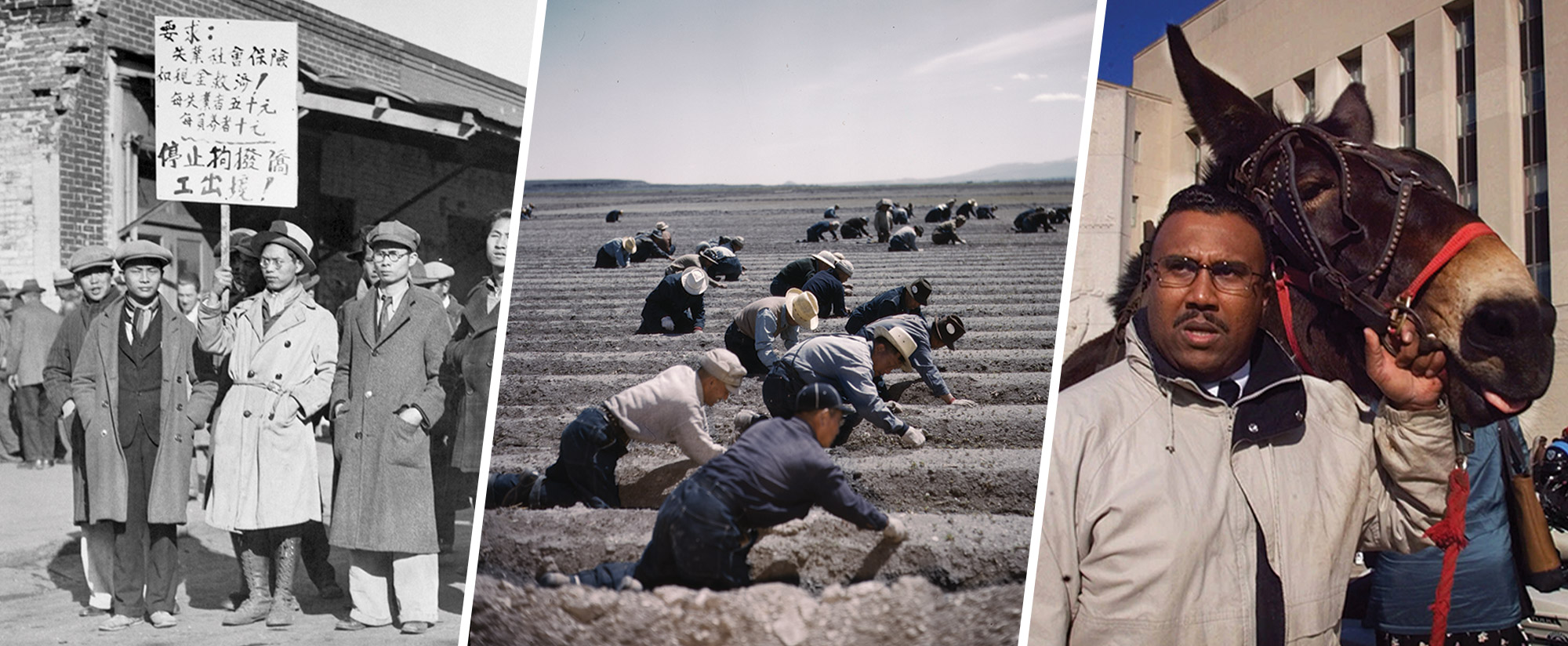Since the inception of the United States, the government has helped make sure land stays in white hands. In the decades after slavery ended, Black Americans accumulated a substantial amount of farmland. According to the Land Loss and Reparations Project, they owned around 20 million acres by 1910. And by 1920, roughly 14 percent of the country’s farmers were Black. But that turned out to be the peak.
“During and after the New Deal, [people] became enamored with getting Black people off the land. And that’s what they set out to do,” historian Pete Daniel, author of Dispossession: Discrimination Against African American Farmers in the Age of Civil Rights, told reporter Bryce Stucki, an analyst with the Land Loss and Reparations Project. As Daniel explained, “the loss of land is connected with this whole apparatus that favors white people.”
Over the next century, government policy, systemic racism, and rampant discrimination within the department of agriculture forced most Black farmers away from the trade. Since then, the portion of farmers who are Black has plunged to just 1.4 percent. The same trend holds true for other farmers of color, whose numbers were winnowed down over time as a result of racist lending practices and a history of laws crafted in a deliberate effort to rob them of their property. According to the most recent USDA data, in 2017, just 2.3 percent of the 3.4 million farmers in the US identify as Native American or Alaskan Native, and less than 1 percent identify as Asian American.
Change may finally be afoot. In recent years, Native communities have catalyzed the Landback movement to advocate for the return of land to the stewardship of Native people. And a few recent policy efforts show a rising awareness of the inequities plaguing Black and Brown farmers. The Justice for Black Farmers Act, introduced by senators Cory Booker and Elizabeth Warren, would mandate new oversight to dispel racism within the USDA and devote $8 billion annually to buying farmland and granting it to Black farmers. President Biden included $5 million in aid for socially disadvantaged farmers in the recent COVID relief bill. While the funds may bring some needed assistance, they will never be enough to account for centuries of intentional land theft.
Here are some key moments in American history when farmers of color were forced off land.
1783: The United States, newly victorious in the Revolutionary War, begins to press for ownership of and access to Indigenous lands, ultimately seizing 1.5 billion acres over the next century.
1830: The Indian Removal Act allows the government to seize the lands of Native peoples in the East and South in exchange for a “colonization zone” west of the Mississippi River. The Trail of Tears soon follows.
1848: The lower Rio Grande Valley becomes part of the US. Anglos begin squatting on the land of Mexican subsistence ranchers, who eventually forfeit their holdings. In the book Pesos and Dollars, Alicia Marion Dewey notes: “The ranchos of Hidalgo county were virtually all gone by 1920.”
1862: Congress passes the first Homestead Act, allowing citizens to claim 160 acres in exchange for a small fee. Homesteaders dispossess Native Americans of 246 million acres in the West. Nearly a quarter of today’s Americans are related to people who acquired land through these laws.
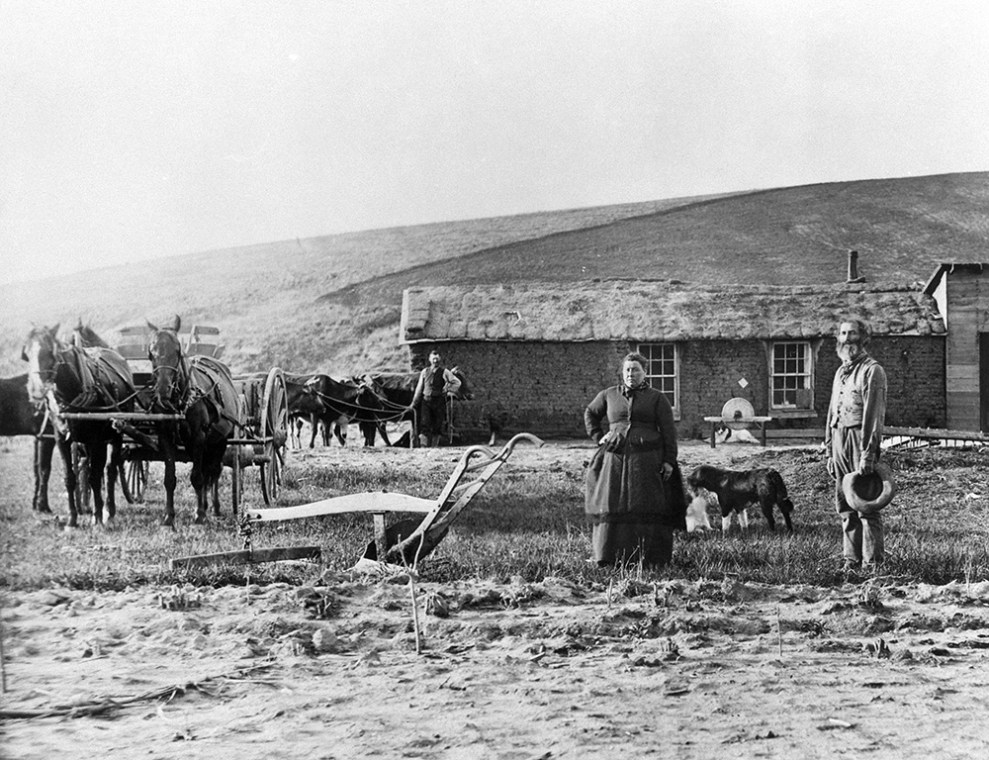
The Homestead Act gave 160-acre plots to citizens, like the Nebraska family shown here, who would live on them for five years.
Bettmann/Getty
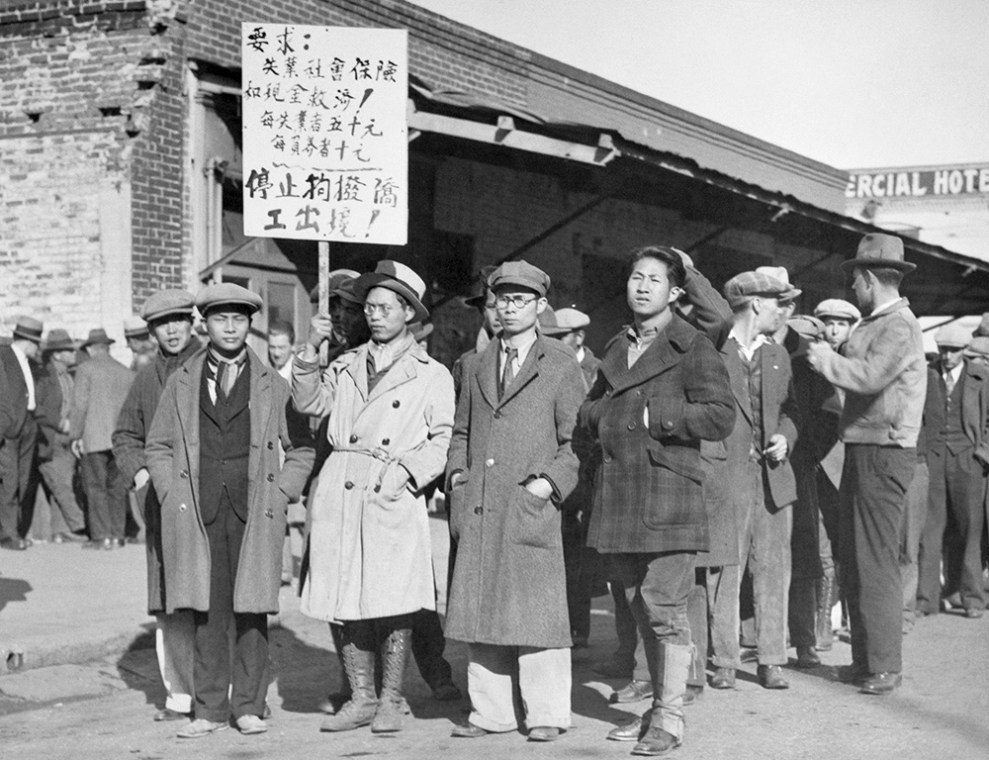
Chinese American farmers in a hunger rally in Sacramento, California, in 1933
Bettmann/Getty
1865: Maj. General Sherman issues Special Field Orders, No. 15, providing thousands of Black Americans with 40-acre plots of tillable land. Part of a set of wartime declarations meant to help recently or soon-to-be-freed slaves, the orders were terminated after Lincoln’s assassination.
1871: Congress passes the second Indian Appropriations Act, declaring “no Indian nation or tribe within the territory of the United States shall be acknowledged or recognized as an independent nation, tribe, or power,” ending treaty making and paving the way for ever more overt land takeovers.
1882: After the collapse of the Gold Rush economy depresses wages out West, public sentiment turns on the more than 150,000 Chinese immigrants who had worked on railroads and farms. Denis Kearney, leader of the Workingman’s Party of California, declares that the “Chinese must go.” No more immigration is allowed, and Chinese immigrants are largely driven in urban enclaves. Japanese farmers—many recently released from indentured labor with Hawaii’s 1898 annexation—soon begin to take their place in California’s fields.
1887: The Dawes Act divides reservations into individual plots, often of unworkable land, cutting the overall acreage owned by Native Americans by more than 60 percent.
1901: President Theodore Roosevelt establishes 150 national forests, stripping Indigenous and Latino communities of access to traditional farming and hunting grounds. Agropastoral communities in New Mexico’s Sangre de Cristo mountains, for instance, are cut off from their farms and foraging grounds when the land becomes the Carson National Forest.
1913: With 100,000 acres of California farmland operated by Japanese Americans, competitive white farmers and “Yellow Peril” propaganda fuel the passage of the state’s Alien Land Law, which bans the purchase and long term leasing of land by those “ineligible for citizenship.” Nina Ichikawa, executive director of the Berkeley Food Institute, whose great-grandfather owned farmland in Contra Costa County, said the goal of the law was to “intimidate, threaten and maintain subservient status” of Asian immigrant farmers. Many Japanese farmers evade the law by setting up land trusts or purchasing under the name of their American-born children, but the state soon closes these loopholes. By 1930, farmland operated by Japanese Americans has fallen by almost 50 percent. Nine other states pass similar legislation.
1910–1920: Black farming hits its peak: Black farmers own more land (approximately 20 million acres) and comprise a greater share of the country’s total farmers (14 percent) than they ever will over the next century.
1930s: White bureaucrats in county USDA offices systematically exclude Black farmers from New Deal subsidies, leading to a deepening concentration of wealth in large white-owned farms.
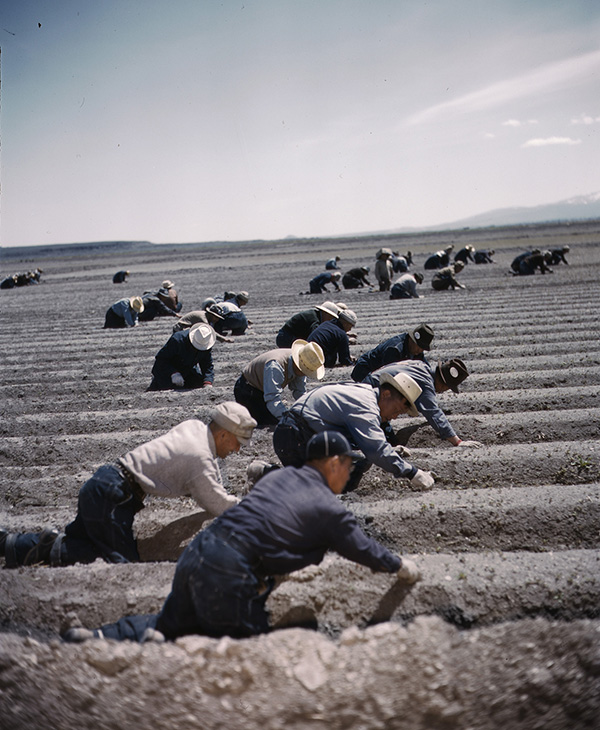
Japanese Americans forced to farm at the Tule Lake incarceration camp in 1942
Russell Lee/Library of Congress

Many Black farmers who moved north in the mid-1900s ended up taking jobs at factories like the Ford Motor Company complex in Dearborn, Michigan.
AFP/Getty
1942: Following the attack on Pearl Harbor, President Roosevelt signs Executive Order 9066, calling for the forced removal of about 110,000 people of Japanese descent from their homes in California, Oregon, Arizona, and Washington. Sent to incarceration camps, many Japanese Americans lose their farms and businesses permanently. Once released, Ichikawa, of the Berkeley Food Institute, says some decided to congregate in big cities for safety rather than return to farms. “They just said, ‘why go back to a place where my neighbors hate me… where they helped the US government take away my rights and swoop like vultures on my farmland and property.’”
1960s: As part of a broader backlash among the Southern white elite, “USDA programs were sharpened into weapons to punish civil rights activity,” writes historian Pete Daniel. Cut off from federal aid, many Black growers are forced to sell or abandon their land, contributing to the migration of Black Southerners to the North. By the mid-60s, less than six percent of the nation’s farmers are Black.
1965: The Commission on Civil Rights finds that the USDA has discriminated against Black farmers. The department’s first civil rights director, William Seabron, is appointed, but his role is largely symbolic.
1984: The USDA’s civil rights enforcement program slows to a “virtual standstill” after facing multiple leadership changes and almost $1 million in budget cuts under the Reagan administration. Rubén Martinez, director of the Julian Samora Research Institute at Michigan State University, says, “Under Reagan, they pretty much dismantled the Civil Rights Office of the USDA and just kind of left it languishing.” Actions like that, he said, have made it difficult for Latinos to obtain loans and manage farms, even though today they are the largest demographic group working in agriculture.
1999: In Pigford v. Glickman, a district court finds that the USDA has continued to discriminate against Black farmers and orders a $1 billion settlement. Of the almost 23,000 Black farmers who file claims, only 15,749 receive payments, most receiving $50,000 each.

President George H. Bush hands out pens after signing the farm bill on Nov. 28, 1990 in Washington.
Barry Thumma/AP
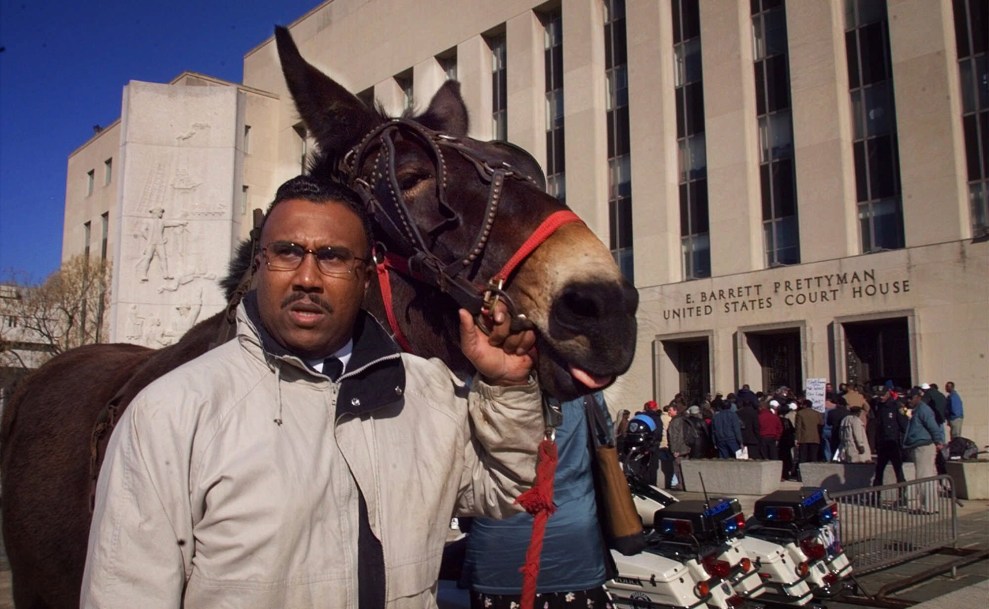
National Black Farmers Association President John Boyd and his mule, named Struggle, at a protest about the size of the Pigford settlement.
Doug Mills/AP
2010s: Some Native tribes have asked residents to pay them a voluntary fee for living on land that their tribe once held. Seattleites can pay the Duwamish Tribe, and non-Native people in the Bay Area can contribute to the Ohlone people. Though it remains rare, some people have independently chosen to pay reparations or give back land to Native peoples. A woman in Utah paid for her great-grandfather’s profiteering by transferring $250,000 to the Ute Tribe in Utah. A farmer in Nebraska signed a deed to return a 1.6 acre plot of native corn to the Ponca Tribe.
2017: Only 1.4 percent of all US farmers are Black. They collectively receive $65 million in annual farm subsidies, while white farmers receive $11.3 billion.
2020: The proposed Justice for Black Farmers Act aims to correct “historic discrimination” in federal subsidies and lending that has resulted in the loss of millions of acres in farmland and “robbed Black farmers and their families of hundreds of billions of dollars of inter-generational wealth.” The bill would devote $8 billion annually to buying farmland and granting it to Black farmers.

